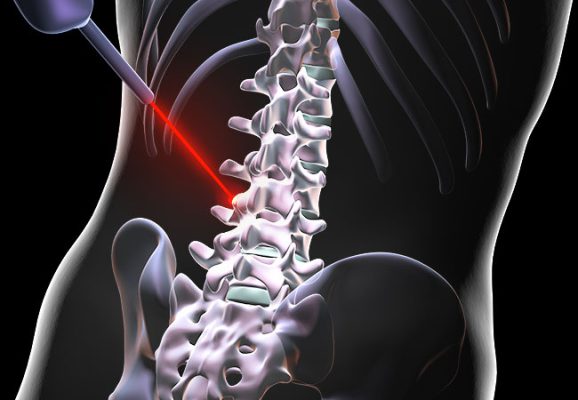Lumbar disc surgery in Iran
Lumbar disc surgery in Iran is a type of operation that’s performed to treat problems related to the lumbar disc(s) in the lower back. These discs are small, round cushions between the vertebrae in your spine that help you move and bend. Over time, these discs can become damaged due to aging, injury, or disease, leading to conditions like herniated discs or degenerative disc disease. These conditions can cause severe pain, numbness, or weakness in the lower back and legs.
When conservative treatments such as physical therapy, medication, and rest aren’t effective, lumbar disc surgery in Iran might be recommended. There are several different types of lumbar disc surgery, including:
1. Lumbar Discectomy: This is one of the most common types of Lumbar disc surgery in Iran. During a lumbar discectomy, the surgeon removes the part of the disc that’s pressing on a nerve and causing pain.
2. Laminectomy: This procedure involves removing part of the vertebrae to relieve pressure on the nerve. It’s often used in cases of spinal stenosis.
3. Lumbar Disc Replacement: During this procedure, the damaged disc is completely removed and replaced with an artificial one. This is a less common procedure and typically reserved for cases where other treatments have failed.
4. Spinal Fusion: In this procedure, two or more vertebrae are fused together using a bone graft, screws, rods, or plates. This restricts movement between the vertebrae and can help alleviate pain.
While these surgeries can be highly effective at relieving pain, they do come with risks, such as infection, bleeding, nerve damage, and blood clots. It’s also possible for the disc to re-herniate after surgery. As with any surgery, it’s important to discuss the potential benefits and risks with your doctor.
Post-surgery, patients generally need to go through a period of rehabilitation, which may include physical therapy, to regain strength and mobility in the back. The recovery time can vary greatly depending on the type of surgery, the individual’s overall health, and their adherence to the recovery plan.
Always consult with a healthcare professional for advice about your specific situation.
Lumbar disc surgery in Iran is usually performed on people who do not respond to non-surgical lumbar disc treatments more easily.
Lumbar disc surgery has an excellent result between 70 and 80%, and 20 to 30% of cases may not work well, and in 4% of cases, the operated disc may rupture again.
In general, lumbar disc herniation treatments are divided into two categories: invasive and minimally invasive.
Invasive Lumbar disc surgery methods include:
- Open surgical procedure,
- Microscopic open surgery method,
Open Lumbar disc surgery in Iran can be performed using local anesthesia or general anesthesia.
So in lumbar disc surgery, we remove the disc nucleus and the two ends of the disc ring join together and heal, and the scar tissue actually repairs the disc.
The patient may live asymptomatic for years.
Of course, some surgeons believe that they should remove the entire disc and use a synthetic disc instead.
Some people believe that the disc should be removed microscopically and the two upper and lower vertebrae should be glued together by placing a screw or a cage between the two vertebrae.
Approximately 70 to 80 percent of surgeons still believe in removing only the disc nucleus without instrumentation.
What is closed lumbar disc surgery?
Closed lumbar disc surgery means surgery that does not use a knife and does not give an incision.
Instead, a hole is made inside the skin through which a needle or endoscope enters the disc space.
There are two types of lumbar spine surgery:
- Laser lumbar surgery
- Lumbar disc endoscopy surgery.
What is open lumbar disc surgery?
Open lumbar disc surgery is a surgery in which a knife is used and a slit is made in the patient’s back.
The muscles are then pushed to the side and a part of the spine bone called the lamina is removed and the nerve root is pulled to the side and comes out from behind the nerve root of the disc.
This surgery is usually done with a microscope.
Is closed lumbar disc surgery better or open?
- The choice of surgery depends on the patient’s age, the patient’s medical condition and the type of lumbar disc.
- Basically, the best type of lumbar disc surgery is open surgery or microscopic surgery.
- We use closed surgery in cases where the disc is small and can be treated with closed surgery.
- In large discs or discs with neurological symptoms, it is advisable to remove the disc under the direct supervision of a surgeon.
- Therefore, surgery is preferred, but there are patients whose amount of rupture and damage to the disc is small and has not caused nerve symptoms, or the patient has a high risk for open lumbar disc surgery. In this case, we use closed surgeries.
What are the types of lumbar disc surgery in Iran ?
Lumbar disc laminectomy surgery in Iran
The oldest method of Lumbar disc surgery in Iran is a procedure called a laminectomy.
In this procedure, the surgeon first opens the spinal canal, which is covered by bones called laminae, so he removes part of the lamina and part of the ligament to reach the nerve root.
He then pushes the nerve root aside and pulls the disc out of the back.
This method was performed for years without the use of a microscope.
Lumbar disc microsurgery (microdiscectomy) in Iran
With the advent of microscopy, the second method of surgery, lumbar disc microscopy, became common.
This procedure is similar to the laminectomy procedure. All procedures are performed as before, but fewer incisions are made and less lamina bone is removed.
In this procedure, the surgeon uses a microscope to look at the nerve root and the disc, which has both better light and makes the nerve root several times larger, making it easier to identify different tissues.
Lumbar disc endoscopic surgery in Iran
The method of lumbar disc surgery is endoscopy, which was first introduced to the world by an Iranian-born surgeon in the United States named Dr. Parviz Kambin.
In this method, which is much easier, the spinal canal is not manipulated and enters the disc through the hole between the needle vertebrae, and then the tube, which gradually increases in diameter (just like a radio antenna) enters the disc space and The narrow tube to which the lens is attached, called an endoscope, then enters the disc space and the disc exits.
This method is less likely to stick. And in fact the least manipulation is done in the spinal canal.
Laser lumbar disc surgery in Iran
The next method is laser disc surgery. This method is called percutaneous lumbar disc decompression.
This method is performed in cases where the complete disk is not torn and the laser beam is inserted into the disk space through a needle with the help of an optical fiber.
When the laser beam enters, the center of the disc is actually burned and a microscopic hole is created inside the disc and the pressure inside the disc is reduced, and then by creating a negative pressure, they try to pull the core of the disc inwards to get away from the nerve root. And the patient’s pain will be well.
Laser lumbar disc surgery in Iran
Epidural injections or fast injections in Iran
The next method, which is no longer considered surgery, is injections made into the nerve root or joints of the spine, called the facet.
These procedures are called epidural injections or fast injections.
It should be noted that each of these cases has its own application and for example, using a laser in a patient who needs open surgery is not correct.
Sometimes minimally invasive procedures such as laser injections or epidural injections or fast injections are used in cases where the surgeon wants to know if the result of the disc surgery is good or not. Normally, if a person heals with these minimally invasive methods for a while, the result of his surgery will be better.
Foot anesthesia after lumbar disc surgery
Some patients who have undergone lumbar spine surgery experience new numbness or weakness in one or both legs.
Leg weakness is an unusual but serious complication that can occur as a result of low back pressure surgery.
Nerve damage and paralysis can be caused by a number of different problems, including:
Intracranial hemorrhage (extrauterine spinal hematoma)
Spinal fluid leakage due to rupture of the membrane around the nerve roots (accidental durotomy)
Accidental damage to the blood vessels that supply blood to the spinal cord.
Acute nerve damage when moving nerves during surgery, tingling, or leg numbness is often a concern because it is a major neurological complication.
Anesthesia and foot surgery
- Most foot numbness is due to damage to the nerve roots inside the spine.
- Nerve damage is due to the pressure caused by the disc on the nerve roots.
- Many spinal invasive procedures are performed to relieve pressure on the nerve roots.
- However, it is normal for some numbness to remain in the foot after spinal surgery.
- Sometimes patients report pain relief and immediate loss of anesthesia in the legs immediately after surgery.
- For other patients, the anesthesia may take some time to resolve completely.
Lumbar disc surgery and marital relationship
Research shows that about 37% of adults with low back pain experience some difficulty during sex. In addition, up to 7% report that low back pain has significantly limited their sex life.
It makes sense, then, that sexual positions that either minimize bending or increase extraction can help reduce pain during intercourse.
When approaching, first determine if you can arch or bend your spine without pain
Congenital scoliosis surgery in Iran
Dr. Mohammad Zarei- Orthopedist specializing in spinal surgery in Iran


